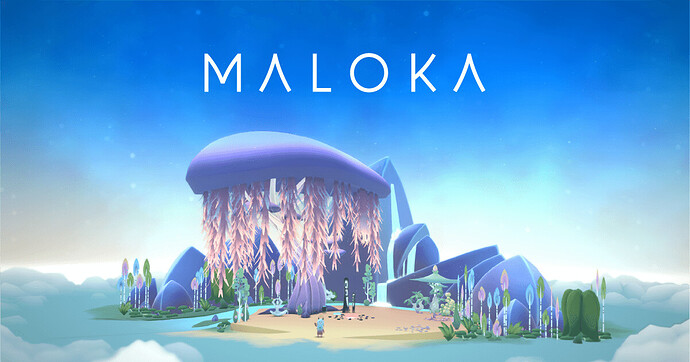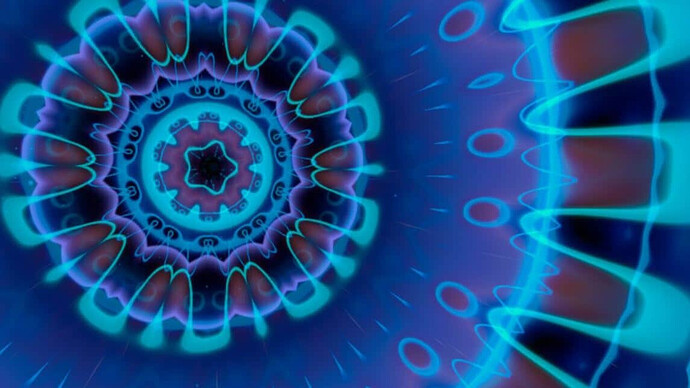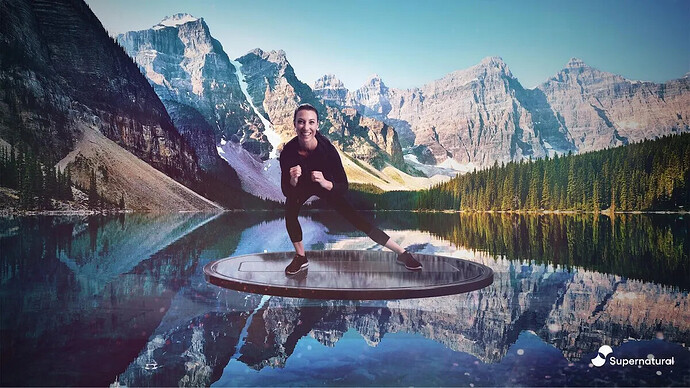Okay so this might sound way off base to a lot of you, and if it does, I want you to know that’s okay. I honestly wasn’t too sure what I would write about until I had a lightbulb ![]() moment from my own practice. It was partly inspired by a conversation between @Phoenix_Fire and I about building inner temples. I had made the comment that I might use The Sims 4 as a starting point for my inner temple construction. Why, you might ask? Because I struggle with visualizing on the fly – I’m a self-diagnosed ADHD autistic – and having something to look at while I visually construct my inner temple would be immensely helpful.
moment from my own practice. It was partly inspired by a conversation between @Phoenix_Fire and I about building inner temples. I had made the comment that I might use The Sims 4 as a starting point for my inner temple construction. Why, you might ask? Because I struggle with visualizing on the fly – I’m a self-diagnosed ADHD autistic – and having something to look at while I visually construct my inner temple would be immensely helpful.
But why virtual reality? This is a technology that I have recently started to play around with a lot more. We purchased a Meta Quest (Occulus) headset a few months ago for the sole purpose of playing Beat Saber. And honestly, I don’t even know if it is considered virtual reality, mixed reality, or something else. I guess I will find out by the time I’m done writing this post! ![]()
Also, apologies ahead of time because this might be extra long… ![]()
What the heck is virtual/mixed reality anyway?
Okay, so the first thing I think of in going back in time to “virtual reality” is any reality that is lived or experienced in a virtual manner. So this takes me back to things like Habbo Hotel, Neopets, and even Second Life. I have only ever played Habbo Hotel and Neopets but I have heard of Second Life. In these games or experiences, one person would have a virtual experience – a home, pets, jobs, shopping, quests, and much more – that would be used for a variety of reasons.
Looking to the Wikipedia article for Virtual Reality, I found this information and definition.
Virtual reality (VR) is a simulated experience that can be similar to or completely different from the real world. Applications of virtual reality include entertainment (particularly video games), education (such as medical or military training) and business (such as virtual meetings). Other distinct types of VR-style technology include augmented reality and mixed reality, sometimes referred to as extended reality or XR. Wikipedia - Virtual Reality
So it looks like, based on Wikipedia’s usage of Virtual Reality, I am not too far off in my definition and usage of the phrase virtual reality. There are many different modern applications of virtual reality using headsets or full rooms. These can include driving simulators, flight simulators, video games, and medical training.
Virtual reality is liminal?
Yes, yes it is! And here’s why I say that. If we look at virtual reality in terms of different dimensions or planes of existence (which might be a stretch for some, that’s okay!) then we can see that virtual reality is a place in-between. It is between the physical reality and the virtual realm. It is between our eyes processing our environment and our eyes processing the environment we put ourselves in.
Our brains are powerful machines, powerful pieces of bundled nerves and electrical currents. We have different stages of brain function in the same way a computer has different stages of operating. We have alpha brainwaves. We have theta brainwaves. We have REM sleep. We have deep sleep. Each of these can be considered a different liminal space because we are in between the “normal” function of our waking mind and the “normal” function of a sleeping or relaxed mind.
These different states of being can also be forced, so to speak. We can do certain things, such as breathwork and meditation, to cause a change in our mental and physical state. Those triggers for change – breathwork and meditation, for example – are liminal spaces.
You know what, I Googled “Virtual reality is a liminal space” and came up with an abstract from a conference paper written in 2019 that sums up what I am trying to say for the answer to this question.
Normal, everyday consciousness is a mixture of mental states which change, dependent upon both internal and external factors, ordinarily without any particular focused direction. When deliberate change is desired, however, there are mechanisms of transition available. These gateways allow smooth induction between stable, sustained, brain states. The Space Between Worlds: Liminality, Multidimensional Virtual Reality and Deep Immersion
Are you still with me? 
Good…
Utilizing virtual reality for witchcraft…is that possible?
You bet your ass it’s possible! (Sorry, I don’t usually cuss here but it was too perfect and I’m too much on a roll ![]() ) Navigating the space of virtual reality within witchcraft, or witchcraft within virtual reality, is something entirely new to me and something I am still playing around with. This first started a few months ago when I got my Occulus headset. Like I said, we got it so we could play Beat Saber (which is a really fun game if you’ve never played it!) but I wanted to see if there were meditation and mindfulness apps and games. And guess what?! There are!
) Navigating the space of virtual reality within witchcraft, or witchcraft within virtual reality, is something entirely new to me and something I am still playing around with. This first started a few months ago when I got my Occulus headset. Like I said, we got it so we could play Beat Saber (which is a really fun game if you’ve never played it!) but I wanted to see if there were meditation and mindfulness apps and games. And guess what?! There are!
The one app I have been using is called Maloka. It is an app on the Occulus that also connects to your phone so you can have your meditations and stats on your phone without having to put on the Occulus headset. In this app, you are greeted with your very own Spirit. This Spirit helps guide you on your meditation quest as you build your island, plant trees and shrubs, and work your way through the meditations.
Image Source
One of the interesting things about Maloka is that when you meditate in VR, you sit within a vortex. Now, this might throw some people off – sometimes it does for me, too – but if you can sync your breathing with the movement of the vortex, you can deepen your breath and get to a point of relaxation that I personally have had difficulty finding. Now, sometimes I close my eyes because the vortex just isn’t working for me that day but I find the trippy colors and guided meditations to be overall pretty interesting and effective.
Here is a picture of one of the vortices.
Image Source
So, outside of virtual reality meditation to help focus, concentrate, and build stamina with intention, what can virtual reality be used for?
Well, here is another way I use it → exercise! I know, I know, this challenge is supposed to be about witchcraft and magic. But guess what? The energy I create during my movements using the virtual reality headset can be so intense that I can use that to power spells later. I am playing around with the idea of creating an energy battery (inspired by someone here but I do not remember who!). I can use my workout to raise energy and then store that energy for later. Plus, I use this app called Supernatural for my workouts that let you workout in the most amazing virtual reality locations. I think my favorite so far was in the snow-capped mountains of some country I can’t remember.
Here’s a picture that shows kind of what I mean ![]()
Image Source
What I want in the future…
Eventually I want to find something that lets me build an inner temple in virtual reality. I haven’t played with this idea too much but I could just imagine building an amazing temple space in virtual reality, visiting it whenever I needed – the candle ambience would be perfect and have a zero chance for causing a house fire ![]() I haven’t tried using the Metaverse thing yet because I don’t want to do it with other people, if that makes sense. I want a space of my own!
I haven’t tried using the Metaverse thing yet because I don’t want to do it with other people, if that makes sense. I want a space of my own!
Okay, so that was long but I hope it made sense. I also hope it helped you broaden your horizons when it comes to the possibilities of witchcraft mixed with our modern technology. I will be exploring virtual and mixed reality for a very long time, I think! Plus this gives our disabled and neurodivergent friends and witches so many more possibilities! ![]()
![]()
My challenge entry for → ![]() Weekly Witchy CHALLENGE - Liminal Magick
Weekly Witchy CHALLENGE - Liminal Magick





